Things to know about Asbestos
We know making sure your property is safe is your top priority. We will always communicate clearly so that you know the proper steps are taken to keep it safe and keep your family healthy. If you have a question with asbestos in your home and how to remove it, give us a call and let us help.
If you are concerned that you have been exposed to asbestos and are worried about possible health issues. Please contact your medical professional.
Asbestos is a name given to a number of hydrated mineral silicates that have a unique crystalline structure, are separable into fibers, and are incombustible in air. Asbestos includes asbestiform varieties of chrysotile (serpentine), (cummingtonite-grunerite), crocidolite (riebeckite), anthophyllite, actinolite, and tremolite. Is asbestos dangerous? We’re glad you asked. Keep reading to learn more!
Asbestos is not always an immediate hazard. In fact, if asbestos can be maintained in good condition, it is recommended that it be left alone and periodic surveillance performed to monitor it’s condition. It’s only when asbestos containing materials are disturbed or the materials become damaged that it becomes a hazard. When the materials become damaged, the fibers separate and may then become airborne. In the asbestos industry, the term ‘friable’ is used to describe asbestos that can be reduced to dust by hand pressure. ‘Non-friable’ means asbestos that is too hard to be reduce to dust by hand. Non-friable materials, such as transite siding and floor tiles are not regulated by the State provided it does not become friable. Machine grinding, sanding and dry-buffing are ways of causing non-friable materials to become friable.
Asbestos is made up of microscopic bundles of fibers that may become airborne when disturbed. These fibers get into the air and may become inhaled into the lungs, where they may cause significant health problems. Researchers still have not determined a “safe level” of exposure but we know the greater and the longer the exposure, the greater the risk of contracting an asbestos related disease.
Inhalation of asbestos fibers has been linked to serious diseases such as asbestosis, lung cancer, and mesothelioma. So, now that you have a better understanding of what asbestos is, it’s time to find out what materials potentially contain asbestos.
Asbestos has not been banned completely in building materials, so no firm build-date can be established to let you know your home is safe. Here is a short list of some of the more common building materials that could contain asbestos:
- Gaskets in old appliances
- Transite in siding, roofing, drainpipes, HVAC piping and gutters
- Fireproofing in old fireplaces
- Insulation that is loose-fill, block insulation sheets or spray-on
- Roofing materials in older homes
- Floor tiles and vinyl flooring that dates in the 1970’s
- Boiler or tank insulation
- Cladding sheets that haven’t been replaced in the last 50 years
- Caulking or construction mastic
- Adhesives and cement used in construction
Only a trained professional will be able to tell you for sure. Call ARC Services for help!
There is no law that says asbestos has to be removed. It is only when the material can no longer be maintained in good condition and /or the airborne concentrations of asbestos are measured to be too high, or when the building is to be demolished or renovated, that removal may become the only option.
When applying for a remodeling, repair, or demolition permit, knowing the laws about asbestos abatement is important. ARC Services has the experience and knowledge to help. Read on to learn more.
There are new Federal Regulations that require all material that has not been tested to be presumed to contain asbestos. Only inspection and sampling may rebut the required presumption.
Any building owner who is renovating or demolishing a building is required by Federal law to have their buildings surveyed for asbestos containing materials. Buildings are not permitted to be demolished if there is friable asbestos present
When removal is conducted, a licensed Contractor must notify the Department of Air Quality and the Nevada Division of Industrial Relations ten days in advance of removal . Some projects, those involving removal of more than 160 square feet or 260 linear feet of ACM, are required to have a scope that details how the contractor will perform the removal.
Asbestos is double bagged, utilizing wet methods, labeled, and provided a manifest for disposal to an appropriate landfill.
The only way to tell if a building material contains asbestos is to contact a certified indoor air quality hygienist who can take bulk samples. These samples are taken back to a lab, where they are analyzed under the microscope to determine the content. New OSHA regulations require building owners to presume that any suspect material is asbestos until a laboratory analysis is conducted. Any material that contains less than one percent asbestos is considered non-regulated.
An indoor air quality hygienist would be able to test to see if your concern is warranted. Call ARC Services if you need help!
